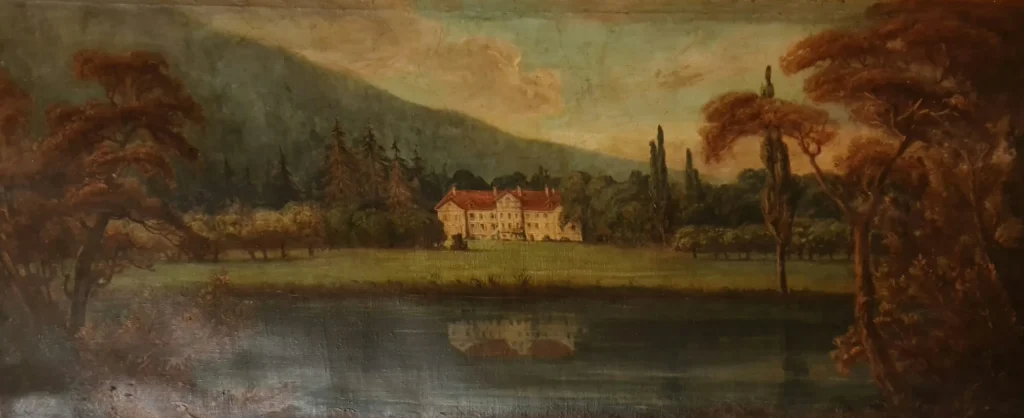The Bacchus vine from Castle Ollwiller
1849

In 1849, 25-year-old Georges Louis Grandidier graduated with a doctorate in Botany and Agricultural Science from the University of Strasbourg. Due to a lack of significant connections, however, his only option at the time was to take a less-than-prestigious teaching position at the newly founded Haut-Rhin agricultural school at the Castle Ollwiller winery.
Bored by the lack of challenging teaching, the passionate teacher soon found distraction in the archives of the castle; and with Claire, the charming daughter of the castle owner…
However, one day Claire fell gravely ill, and no doctor knew how to help her. As her condition rapidly deteriorated, George’s despair grew. He feverishly sought for a way to heal her. Finally, he even put aside his rigorous scientific skepticism: in the archive of the castle, he had repeatedly come across reports from across the centuries that spoke of a mysterious, wondrous wine that had been made by Ollwiller from time to time. It could give life, however at the same time could bring death.
He had previously thought this to be a curious legend, but now in his despair, he would try anything, leaving no stone unturned. Using old plans from the archive, he delved deep into the vault below the castle.
There he came across something unreal: in front of him lay the ruins of an ancient temple. At its centre, a vine had miraculously flourished. Despite the fact that no sunbeam could ever reach here, fresh green leaves had grown on the vine and it was covered with lavish grapes. Georges had an enormous realisation: had he truly found the Bacchus vine?
“The professional world has always dismissed it as a legend. Nevertheless, everyone at the Faculty of Agricultural Sciences had heard the story of the divine grapevine that was said to have been by the Romans to what is now Alsace, 2000 years ago”,
wrote Georges, many years later, in a letter to the Adventure Club of Europe.
“In order ensure that wine grapes would be able to flourish here, they built a temple to Bacchus, their god of wine, vitality, the arts, ecstasy, but also madness. There they planted a vine that had come from the Shrine to the God in Rome itself. When a priest drank the correct amount of this wine, Bacchus would give him vitality, inspiration and creative energy. However, if one failed to imbibe the correct dose and drank too much, they would go mad.“
Georges decided that the castle must have been built on the ruins of this temple. The divine vine of Bacchus had survived through the centuries and must have been used occasionally, hence the reports of a wine that bestowed great vitality on its drinker, but could also lead to fatal madness.
Georges made wine from the grapes, the best he had ever tasted. Before giving Claire a dose, however, he diluted it with water and ice: this allowed her to recover without dying from madness.They married, and Georges finally became the director of the School of Agriculture. So it fell on him to protect the Bacchus vine throughout his life. He never made the discovery public, as it seemed too dangerous.
As he came to the end of an unusually long life – the vine only provided vitality, not immortality – he began to worry about how the vine could be properly protected after his death. Through scholarly circles, he came into contact with members of the ACE, and wrote to the president at the time detailing his discovery and asking the ACE to watch over the vine from now on.
Incidentally, it is said at the ACE that Dr. Georges Louis Grandidier not only protected the divine grapevine, but had also experimented with it. He is said to have crossbred with other grape varieties, in order to retain the wines healing properties, but also remove its dangerous effects. In fact, it is still said today that the those enjoying the ‘Grand Cru Ollwiller’ feel particularly invigorated and inspired…
